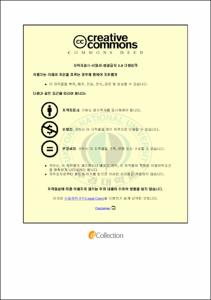근세(近世) 일본의 ‘다비(旅)’ 연구
- Abstract
- ‘Tabi’ has been continuously affecting human life in many forms. It would not be wrong to say that many supplies, knowledge, and information necessary for human life has been shared by ‘Tabi.’
The Japanese pre-modern period is the era that was kept peaceful for about 260 years under Tokugawa regime. Edo Bakuhu improved the transportation policy to maintain Bakuhan system, and organized the infrastructures such as horse and laborers for smooth information delivery and goods transportation. As the result, traveling government officials, Daimyous who are traveling in and out of Edo due to Sankinkoutai system, and furthermore peasants and Chounins could go on ‘Tabi’ without too much difficulty.
The main objective of this paper is to study the figure of ‘Tabi’ amongst many forms of pre-modern period Japanese culture. In detail, it is to examine how ‘Tabi’ of common citizens, who fills up most portion of the population, affected the pre-modern society. The five chapters of this thesis is as in the following. Chapter 1 : ‘Tabi’ of common people shown in Isemairi, Chapter 2 : ‘Tabi’ of Shokyuni, a woman in peasant class, Chapter 3 and 4 : ‘Tabi’ of Kutsukake Nakako and Simura Kyouka, who are both merchant class women, and lastly Chapter 5 : ‘Tabi’ in a Westerner Kaempfer’s eyes. The subject of each chapters will be organized together, in order to study the actual condition of ‘Tabi’ of common people, especially concentrating on women. Through this process, the thesis will help to understand a slice of pre-modern Japanese society.
- Issued Date
- 2014
- Awarded Date
- 2014. 8
- Type
- Dissertation
- Publisher
- 부경대학교
- Affiliation
- 대학원
- Department
- 대학원 일어일문학과
- Advisor
- 신종대
- Table Of Contents
- 목차
* Abstract
* 범례(凡例)
Ⅰ. 서론 1
1. 연구의 과제 1
1.1 과제의 설정 1
1.2 ‘다비(旅)’의 개요(槪要) 3
2. 연구 방법 5
3. 선행 연구 7
Ⅱ. 본론 12
제1장. 이세마이리(伊勢参り)와 서민의 ‘다비’ 12
1. 머리말 12
2. 이세마이리 14
2.1 선행 연구 14
2.2 종교적 성격의 이세마이리 18
2.3 유람적 성격의 이세마이리 21
3. 오시(御師)의 성격과 역할 23
3.1 오시의 유래 23
3.2 이세의 온시 24
4. 이세마이리와 집단적 ‘다비’ 26
4.1 누케마이리(抜け参り) 26
4.2 오카게마이리(お陰参り) 28
4.3 ‘에에쟈나이카(ええじゃないか)’ 31
4.4 여성의 이세마이리 32
5. 맺음말 36
제2장. 농민 여성의 ‘다비’
― 쇼큐니(諸九尼)를 중심으로 ― 39
1. 머리말 39
2. 쇼큐니의 삶 40
2.1 선행 연구 40
2.2 쇼야(庄屋)의 여성 나가마쓰 나미(永松なみ) 42
2.3 새로운 삶 ― 쇼큐 45
3. 여성 하이카이시(俳諧師) 쇼큐니 48
4. 근세 여성의 ‘다비’와 쇼큐니의 ‘다비’ 52
4.1 여성 ‘다비’의 실태 52
4.2 『아키카제노키(秋風の記)』와 쇼큐니의 ‘다비’ 55
5. 맺음말 62
제3장. 상인 여성의 ‘다비’ (1)
― 구쓰카케 나카코(沓掛なか子)를 중심으로 ― 65
1. 머리말 65
2. 순례(巡禮)의 ‘다비’ 67
2.1 선행 연구 67
2.2 순례의 성립 70
2.3 근세의 지치부(秩父)순례 72
3. 기행문과 여성의 ‘다비’ 75
4. 구쓰카케 나카코와 지치부순례 81
4.1 구쓰카케 나카코의 삶 81
4.2 『아즈마지노닛키(東路の日記)』와 순례의 상황 83
5. 맺음말 90
제4장. 상인 여성의 ‘다비’ (2)
― 시무라 교카(志村笻花)를 중심으로 93
1. 머리말 93
2. ‘다비’의 시대적 상황 94
2.1 선행 연구 94
2.2 근세 이전의 ‘다비’ 96
2.3 근세의 ‘다비’ 98
3. 참배의 ‘다비’ 100
3.1 서민의 참배 100
3.2 참배의 양면성 103
4. 젠코지(善光寺)참배와 「시나노노미치노키(信濃のみちの記)」
105
4.1 젠코지의 유래 106
4.2 「시나노노미치노키」와 참배의 상황 107
5. 맺음말 113
제5장. 서양인의 ‘다비’
― 켐퍼(Kaempfer)를 중심으로 ― 117
1. 머리말 117
2. 서양인의 ‘다비’ 관련 기록 및 선행 연구 119
3. 쇄국의 과정 123
4. 켐퍼와 『에도삼푸료코닛키(江戸参府旅行日記)』 126
4.1 에도삼푸 127
4.2 가도의 상황 130
4.3 숙소의 상황 134
5. 『에도삼푸료코닛키』와 근세의 ‘다비’ 136
5.1 일본인들의 ‘다비’ 136
5.2 켐퍼의 ‘다비’ 139
6. 맺음말 145
Ⅲ. 결론 148
【참고 문헌】 154
- Degree
- Doctor
- Files in This Item:
-
-
Download
 근세(近世) 일본의 ‘다비(旅)’ 연구.pdf
기타 데이터 / 4.55 MB / Adobe PDF
근세(近世) 일본의 ‘다비(旅)’ 연구.pdf
기타 데이터 / 4.55 MB / Adobe PDF
-
Items in Repository are protected by copyright, with all rights reserved, unless otherwise indicated.